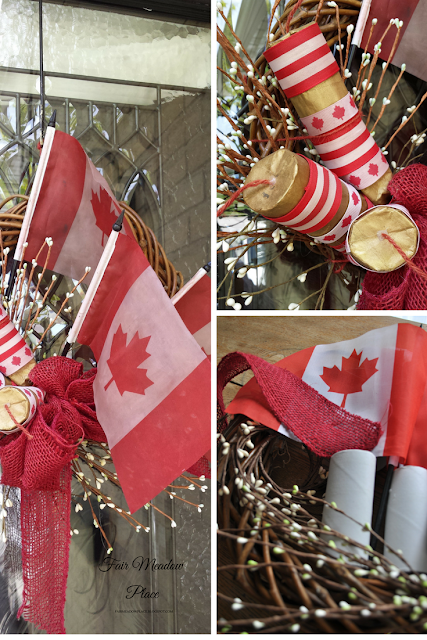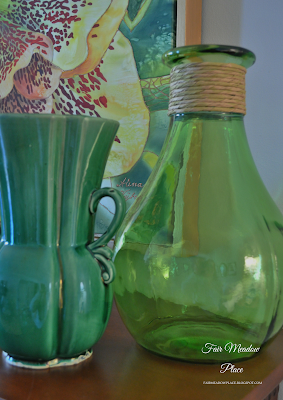Set the Table - Crushing on Orange
I have been craving tropical colour since returning from a recent trip to Trinidad and Togabo.

My flowers are not tropical, but the colours are brilliant.


I don't know what kind of oranges these are, but, they are not sweet.


The small sauce boat is vintage Fiestaware.

We picked this pineapple and brought it home.


 |
| Yellow Poui - The rainy season begins when it drops all of its beautiful yellow flowers. |
 |
| Yellow Poui This table reminds me of all those luscious tropical colours.  |

My flowers are not tropical, but the colours are brilliant.


The tablecloth has a little purple in it. I used purple
glass plates as a nice contrast to the orange.
The placemats are actually Batik napkins. Each one is slightly different from the other, but, the colours are the same.
It is not too often you see an orange Zebra.
I don't know what kind of oranges these are, but, they are not sweet.


The small sauce boat is vintage Fiestaware.

We picked this pineapple and brought it home.

Everywhere we went the Bougainvilia was spectacular.

Tabletop
Tablecloth - Pink City
Placemats - Caribelle Batik, St. Kitts and Nevis, W.I.
Napkins - Cynthia Rowley
Bottom Plate - Pier One
Purple glass plate - Home Sense
Small White plate - Richmond, Johnso Brothers
Bowls - BIA International
Orange sauce boat - vintage Fiesta
Melamine Flamingo plate - The Great Canadian Super Store
Flatware - Bombay
Orange jug (used as a vase) - Home Sense
Orange Zebra - Home Sense
Flowers - Michaels
I am Linking With....
The Scoop
Tuesdays with a Twist
Create and Celebrate
Tablescape Thursdays
This is How We Roll Link Party
Share Your Style
Thursday Favorite Things
Share Your Style
Placemats - Caribelle Batik, St. Kitts and Nevis, W.I.
Napkins - Cynthia Rowley
Bottom Plate - Pier One
Purple glass plate - Home Sense
Small White plate - Richmond, Johnso Brothers
Bowls - BIA International
Orange sauce boat - vintage Fiesta
Melamine Flamingo plate - The Great Canadian Super Store
Flatware - Bombay
Orange jug (used as a vase) - Home Sense
Orange Zebra - Home Sense
Flowers - Michaels
Thank you for stopping by,
Barbara
I am Linking With....
The Scoop
Tuesdays with a Twist
Create and Celebrate
Tablescape Thursdays
This is How We Roll Link Party
Share Your Style
Thursday Favorite Things
Share Your Style
Post Script
The best way to receive posts from Fair Meadow Place is to subscribe by email. SUBSCRIBE HERE






































